Argentina Travel Information
Here you will find useful travel information about Argentina such as information on the entry and exit regulations, travel time and currency, but also important data and facts about the country and its people. Let us take you to the land of Tangos and experience the many-sided natural landscape of Argentina.
Entry and Exit
To enter Argentina you need a passport, that is valid until your expected departure. Children need their own children passport.
You don't need a visa if you are staying less than 90 days. If you want to stay longer you can extend your residence permit for another 6 months.
Duty free import for:- Items for personal use (clothing, jewellery, shoes etc.)
- 400 cigarettes or 50 cigars
- 2 litres of alcoholic drinks
- 50 ml of perfume and Eau de Toilette
For the custom regulations at your reentry to Canada/UK please see special regulations at Global Affairs Canada or the Foreign and Commonwealth Office.
There is a risk for Malaria from October to May below 1200 m altitude in rural areas close to the border to Bolivia (provinces Salta and Jujuy) and the border areas of Paraguay (provinces Misiones and Corrientes). To protect yourself from Malaria and other infections, you should wear clothes, that covers all of your body in the evening and at night. Dengue-Fever
Since the beginning of the year, the number of new infections raised. We recommend to protect yourself from mosquitos. Tips
- In the evening and at night: wear clothing, that covers all of your body. If possible, use a mosquito net
- use an insect repellent
- don't take baths in inland waters
- eat only well-done food
- don't use ice in your beverages
- don't eat food, that can't be cooked or peeled
Travel Facts for Argentina
The climate of Argentina is as diverse as the geographical situation: The country is measuring 3700 km in length and 1400 km in width. Depending which part of Argentina you are travelling to, you can expect different climate zones. The best time to travel is depending much on the location.
Don't forget: When the UK and Canada is in summer, Argentina is in winter season. In general: The months from November to March are the warmest, from June to September the coldest.
Climate and best time to travel depending on region:- North (Salta): Subtropical climate - a lot of rainfall, in the foothills of the Andes especially in summer.
- Northeast (Iguazú Waterfalls): tropical climate, rainfall all year and relatively high temperatures, very hot from January to March. Best time to travel: April to September with moderate and dry climate
- Northwest (Puna desert, Mendoza): extremely dry climate, few rainfall only in summer, hot summers (depending on the height approx. 27°C), cold winter (maximum temperature 10°C)
- Region around Buenos Aires: Mediterranean climate, hot and humid summers. Best time to travel: spring and autumn
- Patagonia (El Calafate, El Chaltén, Bariloche, Ushuaia): Temperatures are going down the further you go southwards, January is the warmest month with approx. 20°C in the north of Central Patagonia. Best time to travel: October to April
East: very dry, very cold winters
West (Tierra del Fuego): humid, all year no big changes in temperature (4-14°C)
Argentina falls under the UTC -3 time zone and does not utilise daylight saving time.
The currency of Argentina is the Argentine Peso (ARS). For one CAD you get approx. 43,72 ARS, for one pound you get 70,26 ARS (last updated 02.09.2019). This is not a constant value. Due to the current inflation the ARS is affected by significant fluctuations. The easiest way to obtain Argentine Peso is on the spot at banks or exchange offices.
We recommend to take some US-Dollars with you because some Argentine shops accept USD or Credit Cards as payment. You can withdraw money without any problems with your debit or credit card at all ATM's. Some ATM's are restricted to 5000 ARS (approx. 114,39 CAD / 71,15 £) per day. Only withdraw as much money as you are planning to spend. Re-changing ARS can be difficult.
To charge your electronic device in Argentina, you need a adapter type I. Sometimes you can find plug sockets of Type C. The line voltage is 220 volt.
If you want to save money while using a phone, we recommend to use the public telephones, called "Locutorios", "Centros de Llamadas" or "Telecentros". It's cheaper than using the phones in hotels. The "Telecentros" are equipped with little cabins and mostly with internet connection.
The international dialing code for Argentina is 0054. To reach a Argentine mobile phone, you need to dial 00549.
In city areas, Argentina is well equipped with a GSM and CDMA network.
Tagle 2828, C1425EEH Buenos Aires
Tel.: 0054 11 4808-1000
Internet: www.argentina.gc.caBritish Embassy
Dr Luis Agote 2412 (1425), Buenos Aires
Tel.: 0054 11 4808-2200
Internet: https://www.gov.uk/world/organisations/british-embassy-buenos-aires.es-419Important telephone numbers:
- Emergency: 107
- Police: 101
- Fire Fighters: 100
- Information: 110
People and Landscape
Argentina is - with a size of 2.78 millon km² - the second biggest country of South America. In the capital Buenos Aires the president Mauricio Macri of the conservative party "Propuesta Republicana (PRO)" is ruling the country since December 2015. Argentina counts 42 million habitants, 2.9 million of them are living in the capital.
Only 2% of the Argentine population are indiginous: Due to the high immigration rate in the 19th and 20th century most habitants are decending from Italian (36%) and Spanish (29%) immigrants. The ethnical minorities are formed of 30 different groups, among them the Kolla, Mapuche and Wichí.
Spanish is the official language of the country. Nevertheless, there are many indigenous languages - espcially Quecha and Guaraní - that are still spoken today. The widely spreaded "Yeísmo" makes the language sound different than in other countries of South America.
Argentina is famous for the Tango. The music and dance have a long tradition in the country. You can experience the Tango either in the streets of La Boca or during a dinner in one of the famous "milongas".
About 90% of the country are Catholic. Beside this, Argentina has the biggest Jewish community of South America with a total of 230.000 members.
The multicultural country has many influence from Europe. The football is an important part of the culture. If you get a chance to wath a football match in the stadium of La Boca or River Plate in Buenos Aires, we highly recommend to catch this unique athmosphere.

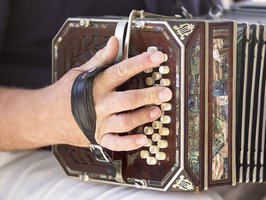

The landscape of Argentina is very diverse doue to the many different geographical zones. The pulsating capital Buenos Aires will impress you with the vivid nightlife and unique cultural offers in theaters, music, opera, literature, film and sport.
In the west of the country, on the border to chile, you can find the Andes with its many active volcanos and the Aconcagua, the highest peak of South America (6962m).
East of the Andes, the Pampa extends to the Atlantic Ocean. The Pampa is a veld landscape and an economic center of Argentina. This part of the country is used for agriculture and meadowland and is generating 90% of agricultural products.
The south of Argentina, Patagonia, was formed by glaciers, that are still existing today - for example the famous Perito Moreno. 600 km away from the coast line of Patagonia, you can find the Falkland Islands, that are geographically a part of Argentina but are a British colonial area since 1833.
In the north of Argentina at the border to Brazil, the Iguazú waterfalls are offering a breathtaking nature spectacle. But not only the 80 big and 255 smaller cascades will impress you - the nationalpark is als a must-see for every nature lover. It's rich species diversity will enchant you.
In the sunny vineyards of San Juan and Mendoza you can enjoy the best wines of Argentina. In the nature reserve Ischigualasto you can admire the stone formations. Further in the north, at the border to Bolivia, you can marvel around old colonial towns.
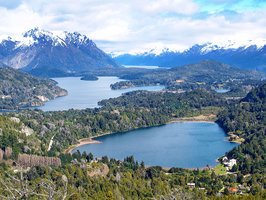
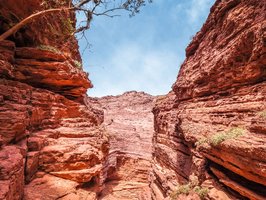
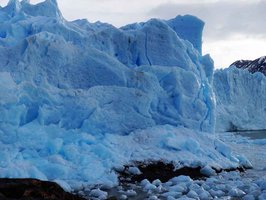
The Argentine cuisine is influenced by the European. You can find Italian dishes like Pasta and Pizza or the Spanish "churros con chocolate" everywhere. What you definitely should not miss on your trip to Argentina is a visit in a "parilla" (steakhouse). Here, you can taste the Argentine steak in all variations.
Another famous dish of the country are the Empanadas, which you can fill with pollo (chicken), carne (minced meat) or jamon y queso (ham and cheese). For breakfast you will have a medialuna con café (crossaint with coffee) or dulce de leche (caramel creme).
Popular local drinks are the famous Mate tea or the Argentine beer Quilmes and, of course, wine from the regions Mendoza and San Juan.
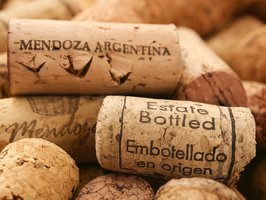

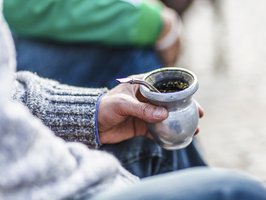
If you are well informed about Argentina now, have a look at our Trips to Argentina or contact our team.
Current Situation
Please keep in mind, that the security situation at place can change at any time. Therefore we recommend to have a look at the current safety information at Global Affairs Canada or Foreign and Commonwealth Office.
Exclusion of Liability
Those who choose to travel do so entirely at their own risk. SC Travel Adventures endeavours to inform tourists of the risks involved with travelling but cannot be held liable for any events which occur outside of their direct control. Tourists are advised to avoid areas considered unsafe, remain vigilant and cautious at all times throughout their stay, and heed the advice of local authorities.
